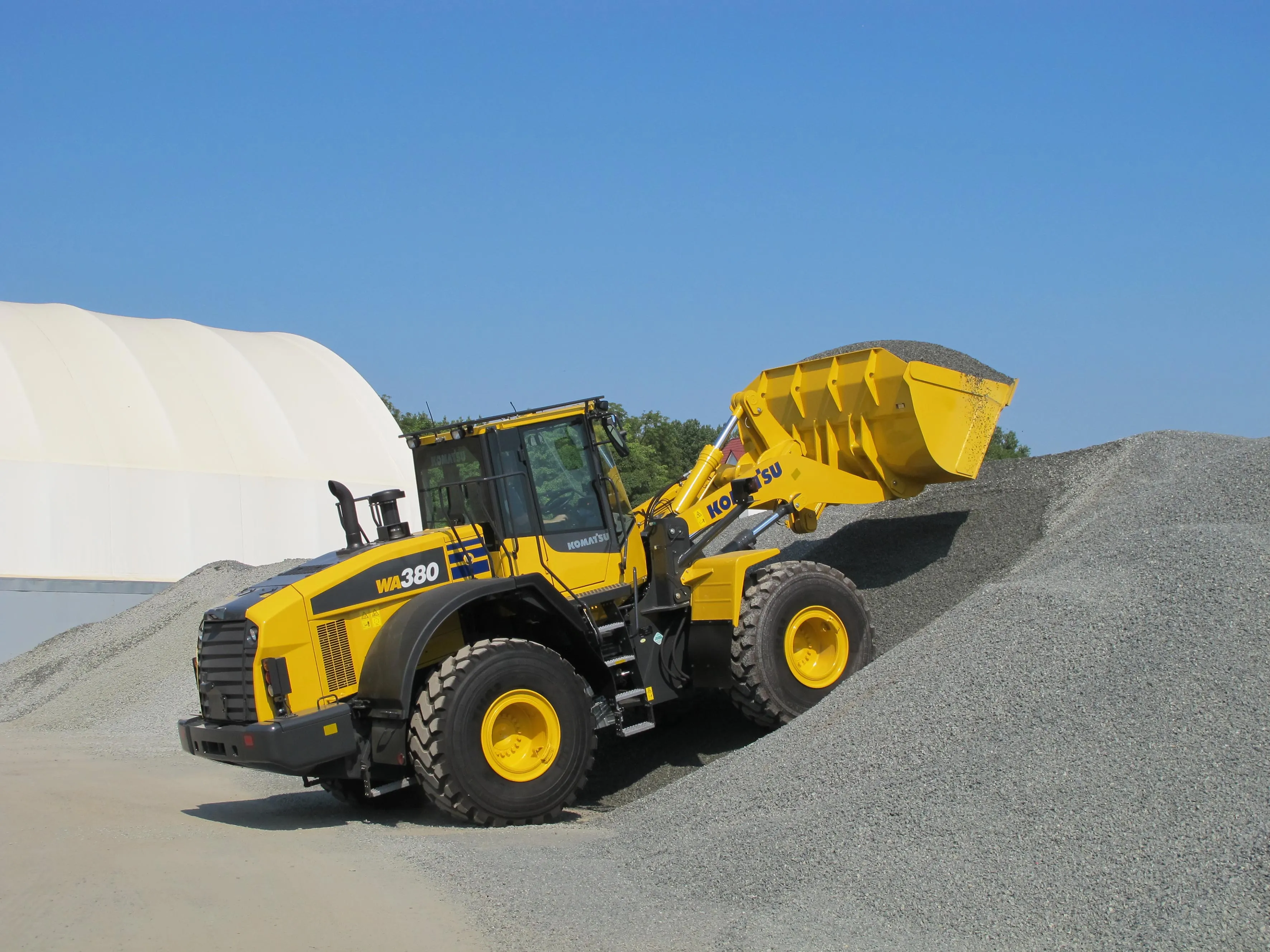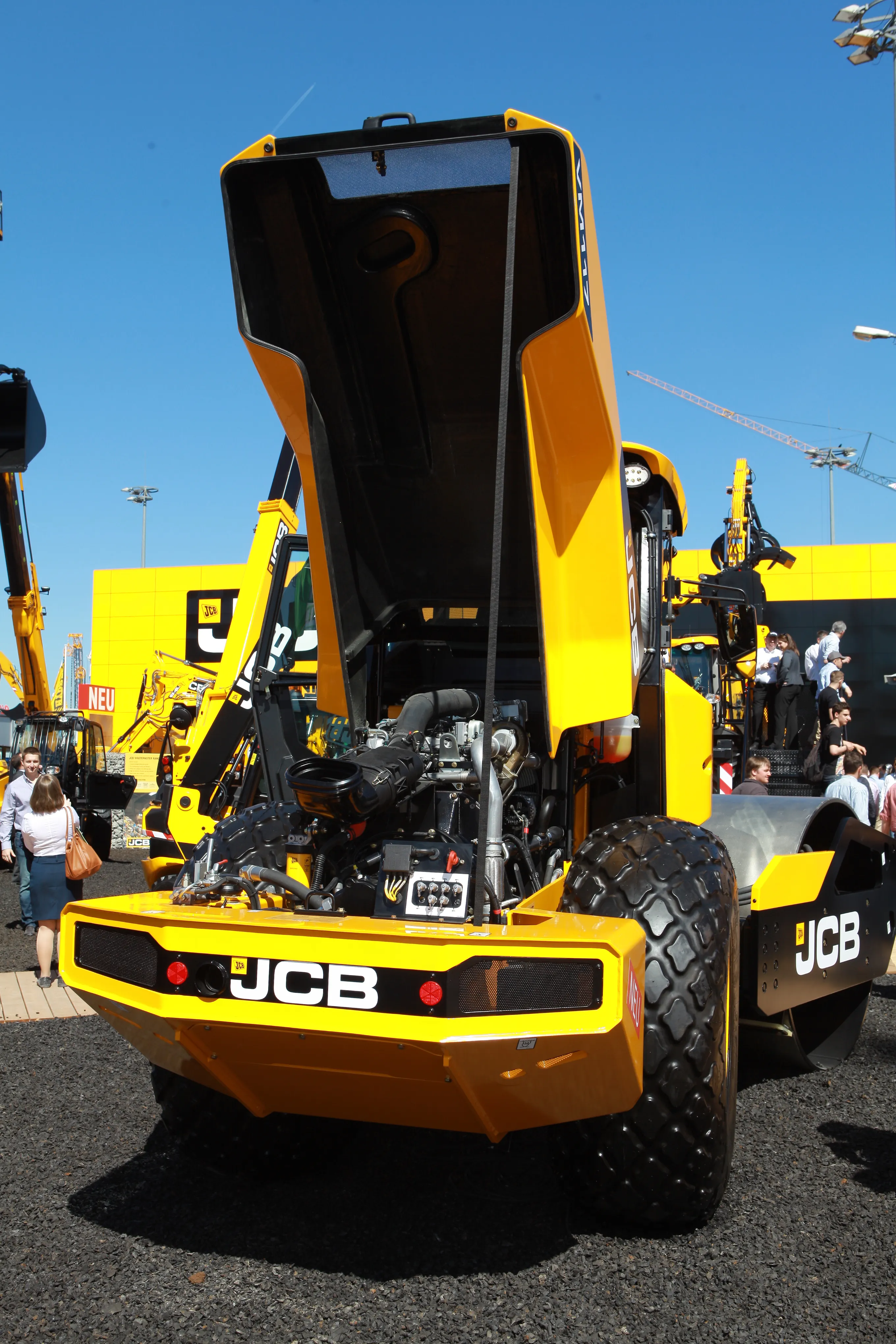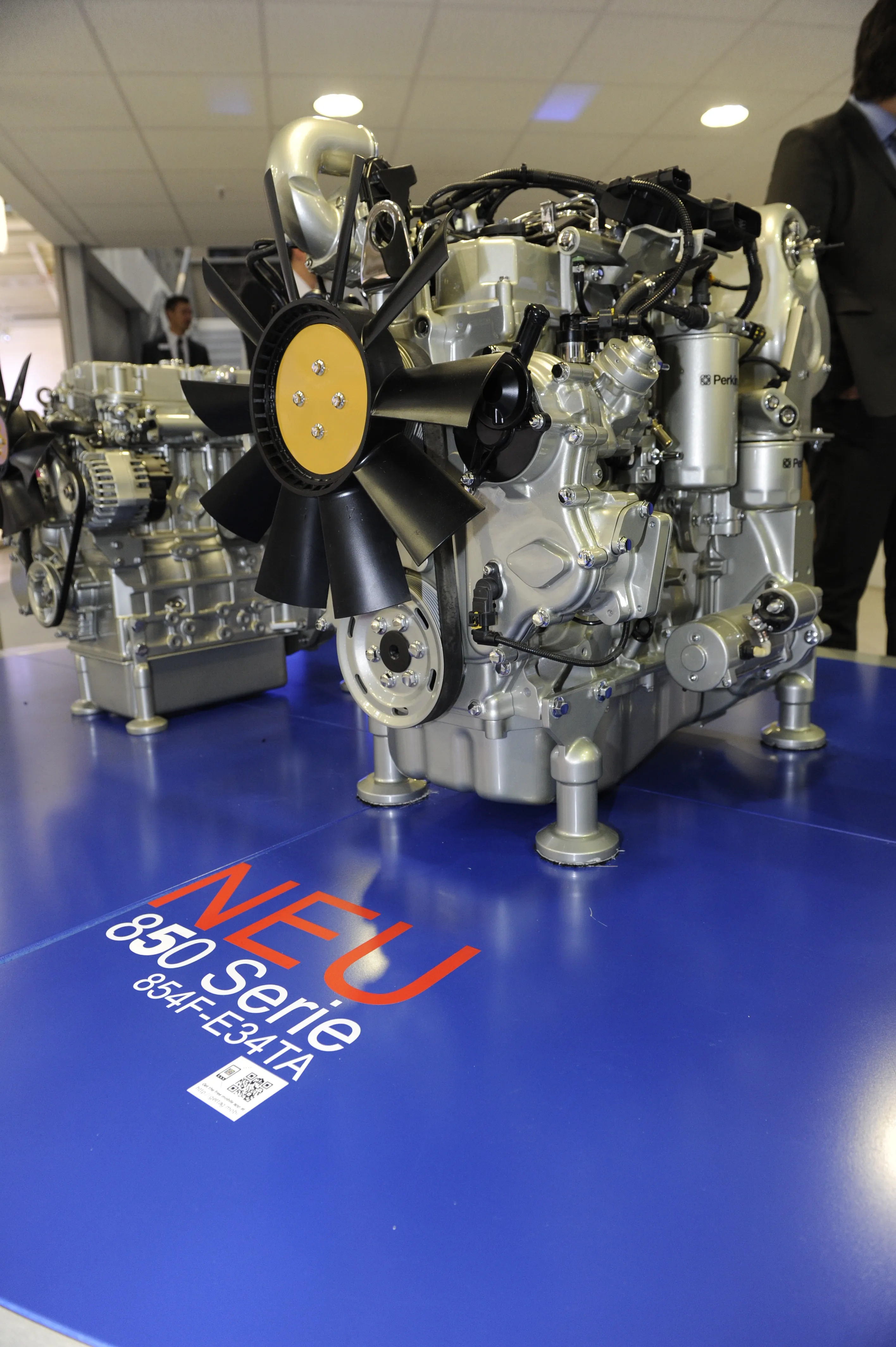Komatsu is introducing it Dash 7 generation of wheeled loaders with a range of models including the WA320-7 and WA380-7. The new WA380-7 weighs in at 18tonnes and features improved efficiency, lower fuel consumption, improved operator comfort, and better serviceability. Power comes from an SAA6D107E-2 Komatsu diesel rated at 143kW and which meets Tier 4 Interim/Stage IIIB emission requirements. Power output and toque have been increased over the previous generation engine used in the WA380-6, while fuel con
January 6, 2017
Read time: 2 mins

Power comes from an SAA6D107E-2 Komatsu diesel rated at 143kW and which meets Tier 4 Interim/Stage IIIB emission requirements. Power output and toque have been increased over the previous generation engine used in the WA380-6, while fuel consumption has been lowered by some 10%. Other engine features include the new variable geometry turbocharger (KVGT) and an exhaust gas recirculation (EGR) valve, resulting in better precision and air management.
Service and maintenance costs are addressed by the Komatsu CARE maintenance program for Komatsu customers, which comes as standard with every new Komatsu machine that meets the Tier 4 Interim/Stage IIIB emission requirements. For the first three years or 2,000 hours it covers factory-scheduled maintenance and includes up to two complimentary Komatsu diesel particulate filter (KDPF) exchanges and a KDPF warranty for the first 5 years or 9,000 hours. Also fitted is the latest KOMTRAX technology on the WA380-7, which sends machine operating information such as operating hours, fuel consumption, location, cautions and maintenance alerts to a secure website and using wireless technology. This sophisticated fleet monitoring system increases machine availability, reduces the risk of machine theft and allows for remote diagnosis by the distributor. The large capacity torque converter has lock-up as standard, boosting acceleration and performance on gradients, as well as allowing a higher maximum speed of 40km/h and also reducing fuel consumption.
Meanwhile the cab offers higher comfort and better visibility and features ergonomic controls, making the machine easier and safer to operate. A new LCD monitor features enhanced capabilities and displays information in 25 languages, as well as allowing an operator to check operational records, such as working hours or fuel consumption. Other general improvements include better maintenance access for servicing, increased cooling capacity, and a standard auto-reversing fan to help keep the radiator clean.
Stand: B5.104/304
%$Linker:







